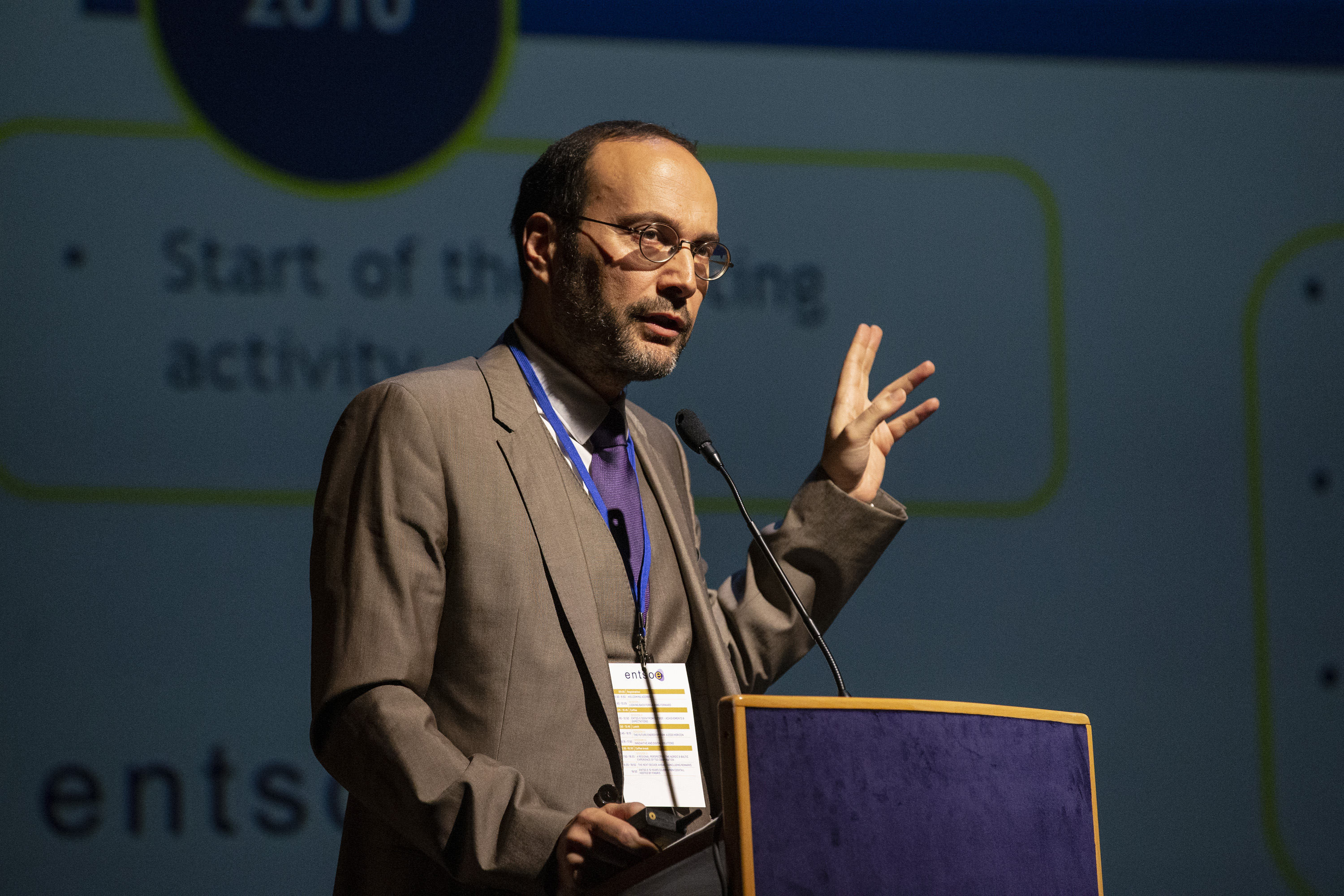
“While the EU political support to those objectives is strong, it must be recognized that the industry is evolving in a global political, financial, social, and technological context,” he says.
Through turbulent times, it is important for the TSO community to enable the transition in a transparent way, while ensuring “the sound and affordable evolution” of the infrastructure towards the fulfillment of the policy objectives.
To achieve that, the first thing to understand is that the power system is part of “one system”; production, storage, transport and distribution, telecommunication, and end usage of energy can work in tandem if and when enabled by consistent market designs and regulations, Chaniotis says.
Interdependencies emerging
Furthermore, new technologies and IT capabilities are enabling the interdependencies between sectors (e.g. electricity and gas, electricity and heating).
“Given the fact that electricity from renewable energy sources is the most efficient way to reduce CO2 emissions in energy production, the electricity grid is in a central role in this multi-sectorial context. TSOs, also through ENTSO-E, are paving the way to new approaches in designing and implementing the future infrastructure, while taking into account the sectorial interdependencies as to ensure that the proposed solutions are economically and societally the most appropriate.”
Chaniotis points out that when one is looking into the future, it is important not to lose your footing in the present.
“Even in schemes taking into account a different future-planning paradigm, the current most efficient ‘no regret’ solutions are by large high-voltage transmission lines. It is critical therefore that these investments are carried out as planned,” he says, acknowledging that the lack of societal acceptance of these infrastructures often hinders their implementation.
Regulation on board?
Implementation of new technologies – such as demand response, storage and digitalization – needs also to be promoted by appropriate regulatory schemes as these have the potential to have significant positive effects with little or no impact on the surrounding environment.
“Also, the electricity grid must contribute to the capability of the TSOs to access flexibility sources that are necessary for the safe operation of the system. Finally, while the grid is contributing to the adequacy of the overall system, abrupt policy developments may push this capability to its limits and beyond if not accompanied with appropriate measures.”
Despite the major progress TSOs have achieved on all of the above, the system is evolving at a pace that is not forgiving and security of supply cannot be taken for granted.
“ENTSO-E and its member TSOs are continuing a decades-long tradition of cooperation and coordination for facing those challenges and enabling the transition in the most affordable manner while safe-guarding security of supply,” he sums up.

Full decarbonization. Now
Antonella Battaglini, CEO of Renewables Grid Initiative (RGI), was scheduled for an appearance at the ENTSO-E Conference, but could not make it. We managed, however, to collect her views in an interview prior to the conference.
Battaglini believes that a full decarbonization of the energy system needs to be achieved as early as possible. Electrification needs to play a key role in this process because of the intrinsic efficiency advantage of the electricity vector.
“We therefore need to develop the grid to be compatible with, and supportive of, the requirements of such a system, while recognizing that grids are only one, albeit important, part of this. New players, such as active consumers and aggregators, and new sectors such as heating and transport, among others, will increasingly become integrated into the electric system.”
While planning this energy future, we need to ensure that we do it in a collaborative manner to allow for a fair and inclusive transition, she adds.
RGI is a unique collaboration of environmental ngos (non-governmental organisations) and transmission system operators from across Europe. It promotes transparent, environmentally sensitive grid development to enable the further steady growth of renewable energy and the energy transition.
Political passions on the rise?
Battaglini points out that we live in a political environment in which trust in institutions is low and nationalistic sentiments are on the rise. This means that emphasizing the European importance of a particular grid project might not always be met with understanding by local communities – especially if the local benefit is not immediately apparent.
“While this poses a challenge, I also consider it an opportunity to re-think the way we include people in shaping a sustainable, affordable and secure energy future.”
During the next decade, she expects to see a more collaborative and inclusive grid planning process. In the past, TYNDP scenarios have been criticised for not being aligned with the climate targets and for not looking into extreme scenarios.
“Despite the fact that the TYNDP is so important for assessing the European infrastructure needs relevant for delivering decarbonization, only relatively few civil society and citizen organisations take an active role in the process. RGI is currently working together with CAN Europe, EEB, REN21 and the ENTSOs to change this.”
Valuable partnership
Battaglini observes that ENTSO-E has been instrumental in implementing the third energy package and therefore supporting the energy transition. ENTSO-E has been and continues to be an important partner for RGI, an organisation she initiated 10 years ago.
Going forward, she envisions ENTSO-E continuing to do an impressive job shouldering the technical planning of the grid infrastructure, while RGI will continue to push for “a more ambitious and inclusive transformation” in line with people’s concerns and the protection of nature.
“We complement each other well and I look forward to continuing working together for the next 10 years.”
Quotes on Building the grid
“There is sufficient capacity (in cable industry) to realize Grid 2030, even if there are delays.”
– Raul Gil, Chairman, Europacable Energy Infrastructure Team
“The concept of System of Systems is a strong one, and we need to continue to boost collaboration in various ways.”
– Jan Ingwersen, General Manager, ENTSOG






